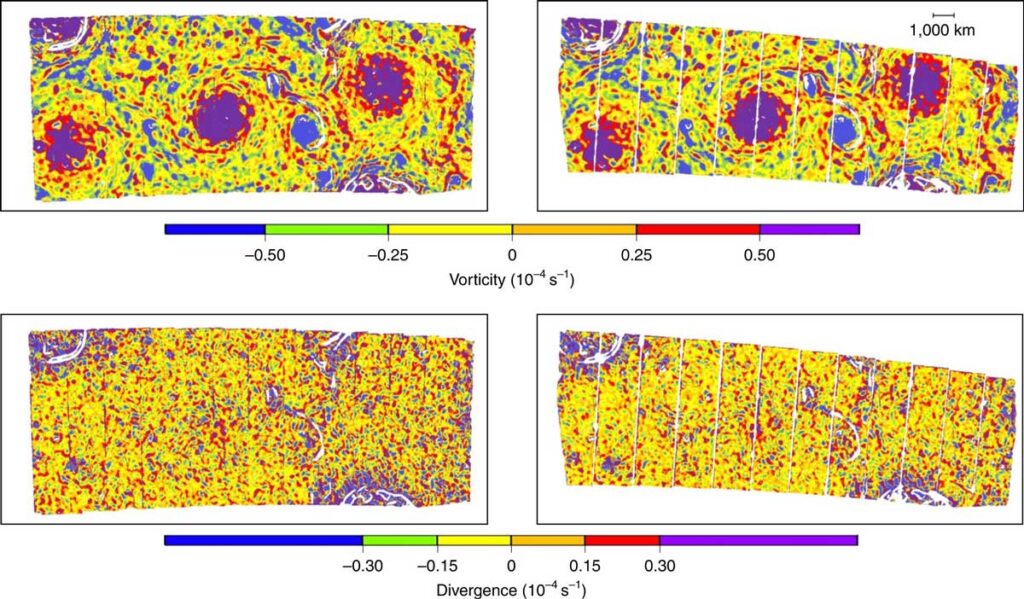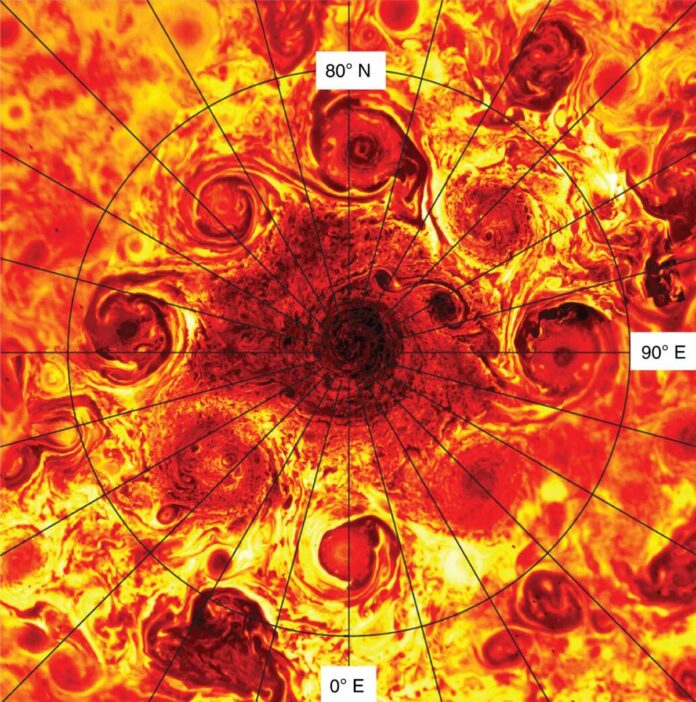A team of space scientists from multiple institutions in the United States, along with colleagues from Italy and France, used modelling to explain the resilience of cyclones circling Jupiter’s poles. The group describes how they analysed images captured by the Juno space probe and used what they learned to create shallow water models that may explain, at least in part, why the cyclones last so long in their paper published in the journal Nature Astronomy.
NASA’s Juno space probe entered orbit around Jupiter in 2016. Unlike previous probes of this type, it has circled the planet from pole to pole rather than around its equator. When the probe began sending back images of the planet from this new perspective, researchers discovered a surprise. There was not only a single cyclone atop each pole, but both were surrounded by more cyclones. More images of the poles have emerged over time, and researchers studying them are still astounded by the cyclones’ stability—the originals are still present today and have not changed shape. Such behaviour is, of course, unheard of on Earth—cyclones form, travel for a while, and then dissipate. Researchers are scrambling to come up with a plausible explanation for what they have observed.
Photographs of the planet’s north pole show eight cyclones circling the central cyclone directly over the pole. All eight are close together, nearly equidistant from the central cyclone, and arranged in an octagonal pattern. It is unclear whether the cyclones rotate around the centre at this time. A similar arrangement exists at the southern pole, but there are only five cyclones in the shape of a pentagon. In this new effort, the researchers tried a new approach to explaining how cyclones can stay in place for so long without changing their position or shape.

The team’s work included analysing images and other data from the Juno probe, specifically wind speeds and direction. They then used what they learned to create shallow water models, which led them to propose that the cyclones are held in place by a “anticyclonic ring” of winds that move in the opposite direction of the cyclones. While this may be true, the team was unable to find convection signatures, which would have helped to explain how heat was used to fuel the cyclones. They admit that much more research is needed to fully explain the behaviour of Jupiter’s cyclones.

